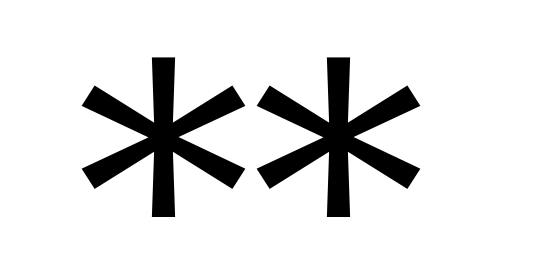Catalase-peroxidase from phytopathgenic fungi
- Nachwachsende Rohstoffe und neue Technologien
- Biotechnologie
- Forschungscluster "Bioindustrielle Technologien"
Abstract
Catalase-peroxidases (KatGs) are unique bifunctional homodimeric peroxidases exhibiting both peroxidase and catalase activity within a single active site located in the N-terminal domain of each subunit. Besides Eubacteria and Archaebacteria, the corresponding katG genes have been identified also in fungal genomes. Sequence and preliminary expression analysis in our group clearly demonstrated the occurrence of two distinct fungal KatG groups. KatG1 is located in the cytosol and expressed constitutively, wheres KatG2 is secreted and its expression is significantly enhanced by induced oxidative stress. Because of their putative role in pathogenic attack of plants, we focus this project on KatG paralogs from the phytopathogenic fungi Magnaporthe grisea and Giberella zeae. We have already succeeded in cloning the cDNA of two katG1 and katG2 genes from both organisms as well as in heterologous expression of the corresponding proteins in various E. coli strains. Observed differences in catalytic and structural features between bacterial and fungal KatGs as well as between KatG1 and KatG2 will be investigated by comprehensive biochemical and biophysical methods. In detail, electronic features of the corresponding redox intermediates and the kinetics of interconversion will be determined by multi-mixing stopped-flow UV-Vis-, fluorescence- and CD-spectroscopy, whereas spectroelectrochemical investigations will give insight into the thermodynamics of redox transitions. Structural information of the active site of KatG1 and KatG2 in solution will be obtained by resonance Raman spectroscopy, whereas the overall structure of one selected representative of each group should be elucidated by protein crystallization and X-ray analysis. Because of limited success of rational mutagenesis in answering mechanistic questions (e.g. about KatG binding and oxidation site(s) of peroxidase substrates) directed protein evolution will be started with MagkatG1 gene. Error-prone PCR (EP-PCR) and large-scale negative screening of up to 10 000 clones should give first hints about the location of residues that are important in the peroxidase cycle of KatG. Interesting clones will be selected for saturation mutagenesis. With this technique also putative substrate binding regions suggested from inspection of crystal structure(s) will be probed. Additionally, we intend to apply DNA shuffling to a mixture of most interesting mutants and, finally, perform “family shuffling” between fungal paralogs and even between homologous bacterial and fungal katG genes. Unique hybrid-type hydroperoxidases with yet unexpected enzymatic properties could result. In the last ambitious stage a designer peroxidase will be (re)constructed upon using the compact soluble, protease- and temperature resistant fungal C-terminal domain as a test tube. The latter is sequence and structure-related with the catalytically active N-terminal domain but lacks the prosthetic group. Summing up, this project for the first time aims to investigate structure-function relationships of eukaryotic KatGs and to understand differences between fungal KatG1 and KatG2 groups as well as to answer yet unsolved general mechanistic questions about the unique bifunctional activity of these oxidoreductases. And we propose and will test the C-terminal KatG domain as an ideal protein frame for the construction of designer peroxidase(s).
Publications
Resonance Raman spectroscopy of catalase-peroxidase from the phytopatogenic rice blast fungus Magnaporthe grisea
Autoren: Droghetti, E., Zamocky, M., Furtmüller, P.G., Obinger, C., Smulevich, G. Jahr: 2010
Conference & Workshop proceedings, paper, abstract
external links and characteristics of the publication:Phylogenetic analysis of haem peroxidases and catalases reveals the occurrence of unknown enzyme (sub)families
Autoren: Zamocky, M., Furtmüller, P.G., Obinger, C. Jahr: 2009
Conference & Workshop proceedings, paper, abstract
external links and characteristics of the publication:Evolution of structure and function of Class I peroxidases.
Autoren: Zámocký, M; Furtmüller, PG; Obinger, C; Jahr: 2010
Journal articles
Two distinct groups of fungal catalase/peroxidases.
Autoren: Zámocký, M; Furtmüller, PG; Obinger, C; Jahr: 2009
Journal articles
Mechanistic aspects of catalase-peroxidase in HEME PEROXIDASES
Autoren: Gasselhuber, B., Jakopitsch, C., Zamocky, M., Furtmüller, P. G., Obinger, C. Jahr: 2015
Chapter in collected volumes
external links and characteristics of the publication:Undiscovered ways of evolution in the peroxidase-catalase superfamily: hybrid heme peroxidases
Autoren: Zamocky, M., Chovanova, C., Furtmüller, P.G., Obinger, C. Jahr: 2013
Conference & Workshop proceedings, paper, abstract
external links and characteristics of the publication:

 dx.doi.org
dx.doi.org
